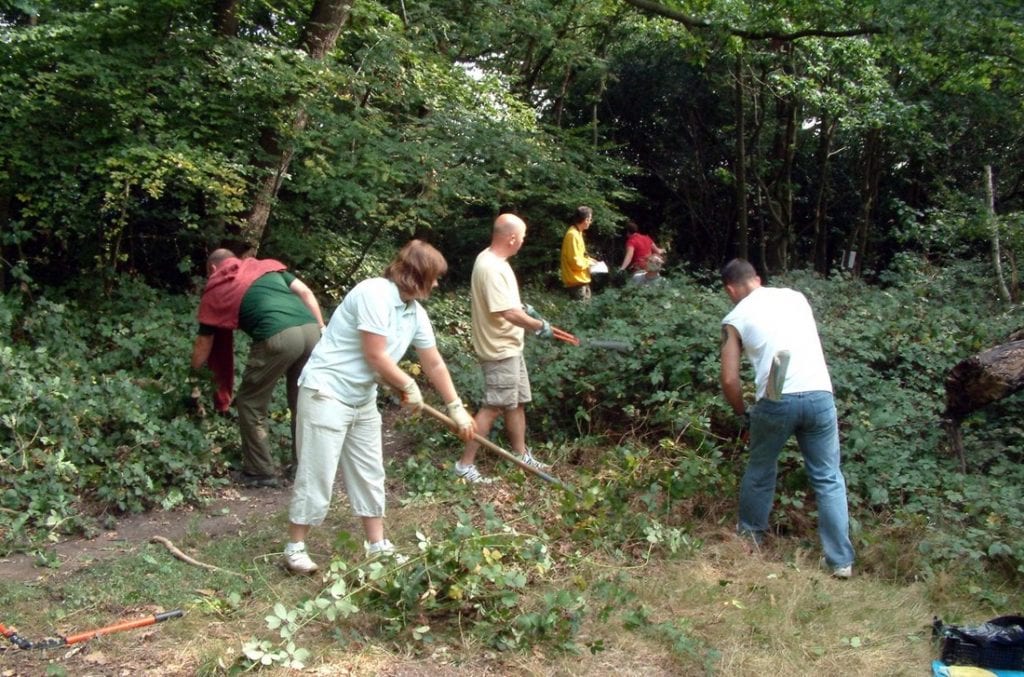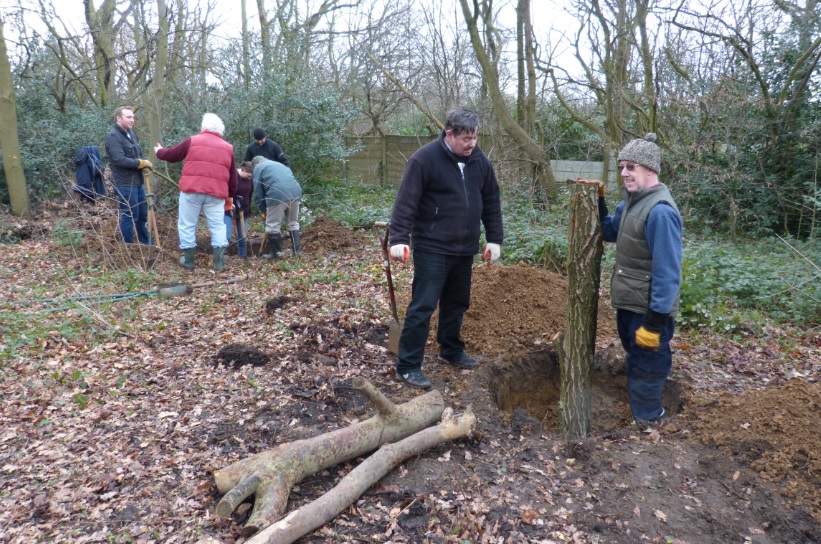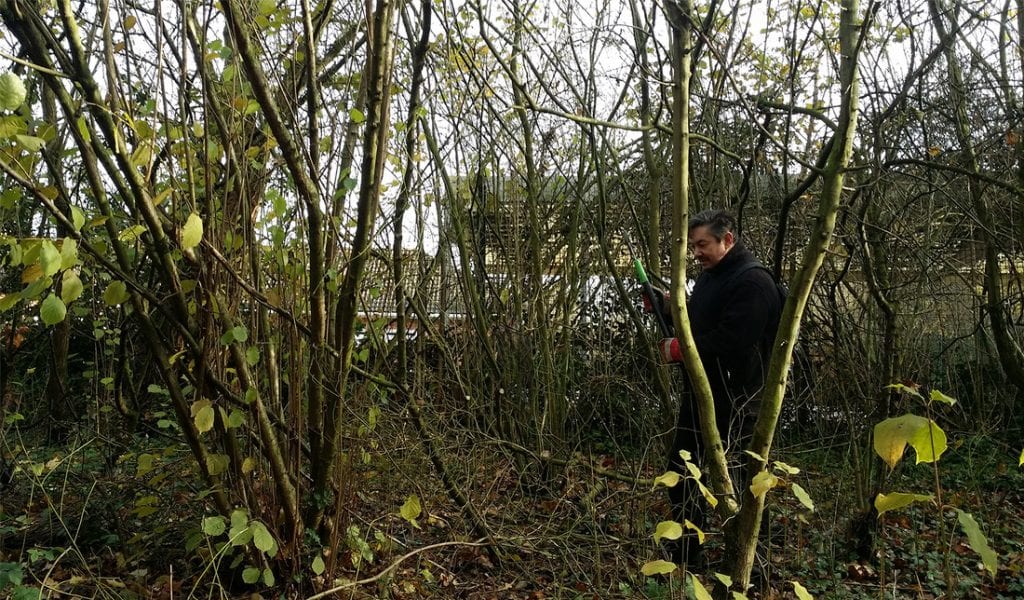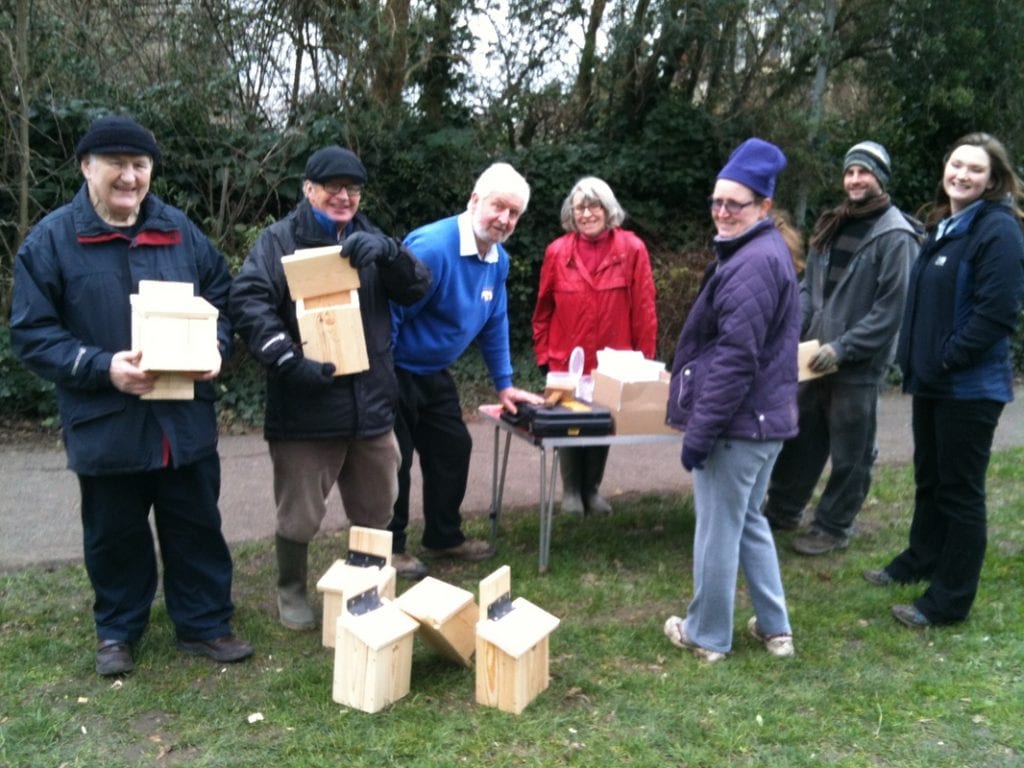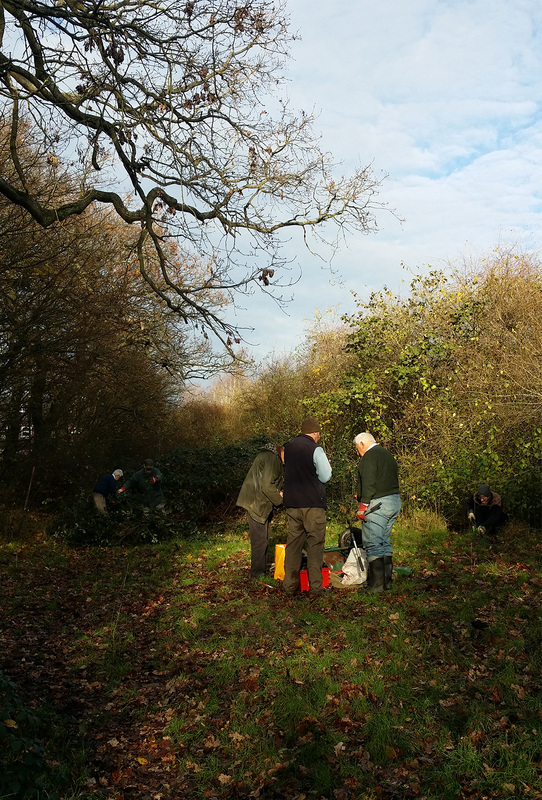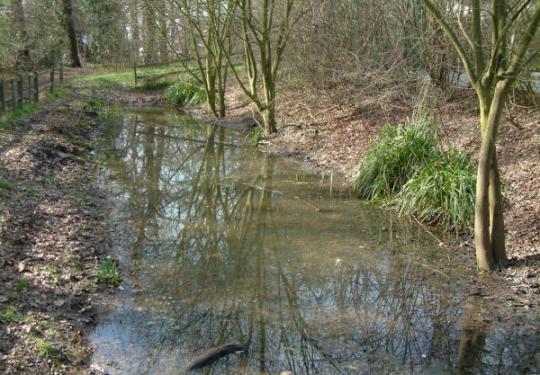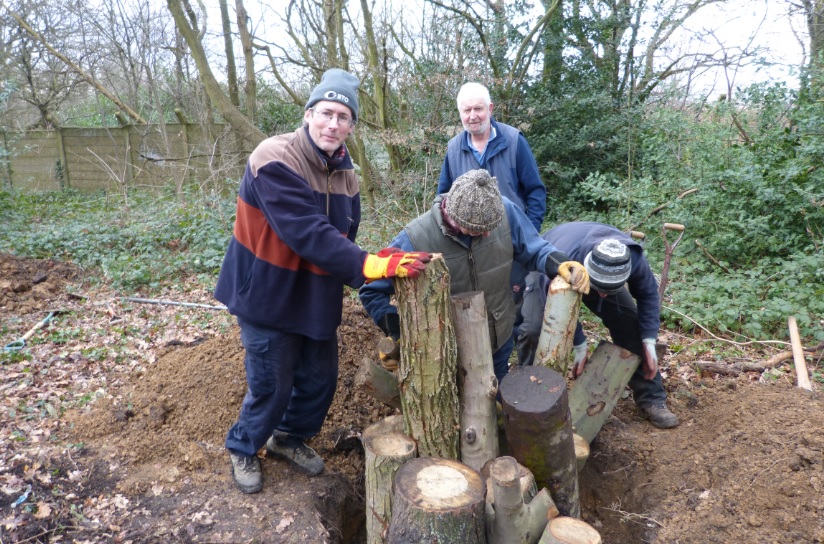Ainslie Wood and Larks Wood are situated in Chingford. Larks Wood is the larger of the two woods. It covers two adjacent hills and there are some clearly defined paths.
The Friends Group (FOAL) was formed in December 2004 and meets the second Sunday of each month at 11.00 a.m. at either the entrance to Ainslie Wood (at the end of Ropers Avenue) or Larkswood Recreation Ground (Normanshire Drive entrance), dependent on the work assignment.
Contact details
Pam Sable (Secretary)
Email: p.sable@btinternet.com
Alan Butterworth (Treasurer)
Email: alanbutterworth123@btinternet.com
Social Media
Facebook
Ainslie and Larks Woods, London E4 (@ainslielarkswoods)
Ainslie Wood
Location
Facilities
- Great in the Spring for Bluebells.
- Has many Oak and ancient trees.
- Woodland ideal for walking.
You can find out more about Ainslee Wood on the GoParksLondon Website.
Larks Wood and Larkswood Playing Fields
Location
Facilities
- Ancient woodland ideal for peaceful walks.
- Impressive Oak and Hornbeam trees.
- Large open area ideal for informal football, playing games and picnics.
You can find out more about Larks Wood and Larkswood Playing Fields on the GoParksLondon Website.
History
The area in which Ainslie and Larks Wood are to be found was part of the “Manor of Chingford Earls” (which was acquired by Henry V111 in 1544). Last owners of the title were the Boothby Heathcote family of Friday Hill House. Both areas of woodlands are part of the ancient “Forest of Essex”.
The name ‘Larks’ is probably associated with the family of Thomas Laverk mentioned in the subsidy rolls of 1319. An isolation hospital opened in 1901 on the site of ‘Larks Wood Lodge’ and some 20 acres surrounding it (now the site of Chingford Hospital and houses). Larks Wood was colloquially called the ‘bluebell wood’ in the early 20th century and hoards of visitors almost destroyed the great quantity of bluebell plants.
Ainslie (Endsleigh) Wood was known as ‘Little Larks’ in 1559 and later as ‘St, John’s Wood’. This information was from a former owner Sir Robert Sharpe Ainslie whose residence was the ‘Rolls’ in the 19th century. By the 1960’s the only building there was known as Rose Cottage (on the site of Nasebury Court Hospital and Rolls Park tennis courts).
Ainslie Wood was privately owned until fairly recently and not accessible to the public until the London Borough of Waltham Forest became responsible for its preservation. Small as it is, it has some very interesting and rare flora and no doubt due to its isolation for so long a range of wildlife not often found in such an urban setting.
This information was acquired through pamphlets kindly loaned to the Friends of Ainslie and Larks Woods by Mary Dunhill.
Ecology of the woods
Both woods have oak, hornbeam and the rarer wild service tree. Also some hazel, crab-apple, field maple, hawthorn, blackthorn and rowan can be seen around the woods. Larks Wood is also home to some beech and a few wild cherry trees.
There are many birds in the woods, both common and uncommon. It is very easy to see the great spotted woodpecker, blue tits, great tits, robins, wrens, long tailed tits and jays. You may even see a tree creeper, a nuthatch or a black cap. Occasionally tawny owls can be heard at night and bats can be observed too.
Blue bells and wood anemones are a lovely sight around the woodland edge in spring. Also in lesser numbers violets and celandine can be seen.
Squirrels are very commonly seen in the day and foxes are regularly seen in the evening.
Nature trail booklets are available upon request.



